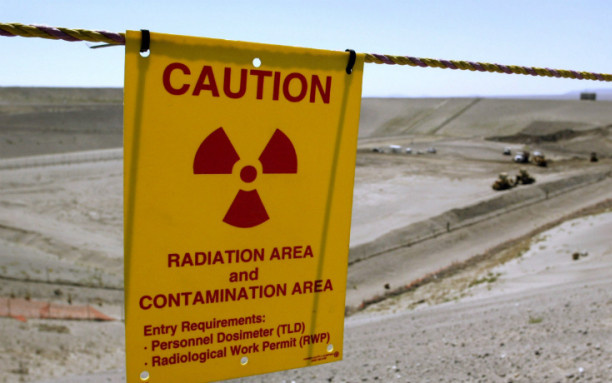“Nuclear weapon states are seen to be failing to live up to their special responsibilities” over non-proliferation and a stumble into conflict. What can be done to change this?
Co-written with Sebastian Brixey-Williams and originally published by the European Leadership Network:
High-level officials from the five nuclear weapon states recognized under the Nuclear Non-Proliferation of Nuclear Treaty – China, France, Russia, the UK, and the US – met in London this week.
Their purpose? Under the “N5 Process”, they were discussing nuclear doctrines and strategic intentions, hoping to reduce the likelihood of a miscalculation or misunderstanding stumbling into a nuclear conflict. They also discussed how to fulfill their responsibilities around disarmament, non-proliferation, and the peaceful uses of nuclear technology — a conversation within the context of the NPT Review Conference later this year.
Having failed to agree a statement in Beijing in 2019, where visceral distrust between the United States and Russia overshadowed proceedings, it was hoped that the UK’s chairing of the process could bring progress as experts perceive nuclear risks on the rise. In January, the Bulletin of the Atomic Scientists’ “Doomsday Clock” — which symbolically registers humanity’s proximity to existential threats such as nuclear annihilation, climate crisis, and cyber-based disinformation — to 100 seconds before midnight for the first time.
Nuclear weapon states are seen to be failing to live up to their special responsibilities, both as the principal leaders of nuclear disarmament within the NPT and as the permanent members of the UN Security Council. Decision-makers in Russia and the US, the two powers with the greatest nuclear arsenals, have ratcheted up their nuclear threats and failed to agree even basic principles in recent years.
The Trump Administration has complicated the search for shared principles that might reduce the risks of nuclear conflict. It has pressed to join a new trilateral strategic arms control negotiating process. Beijing has pushed back strongly, with Russia joining it in suspicion of US intentions.
A Way Forward?
Officials involved in the N5 Process say increased working-level engagement is bearing some fruit. Foreign and Defense Ministry officials are now able to communicate directly with their compatriots in other countries. Negotiators have a better understanding of each other’s doctrine and posture. The nuclear weapon states have produced a glossary of key nuclear terms, much derided amongst disarmament activists, but an essential step in ensure that all countries are speaking a common language.
Arms control experts hope this glossary will be expanded with new terms in the coming meeting. The N5 are discussing increasing transparency around nuclear forces, a Fissile Material Treaty cutting off the production of new nuclear material which can be weaponized, and joint signature of the Protocol to the South East Asian Nuclear Weapon-Free Zone, also known as the Bangkok Treaty.
Against the backdrop of increased competition and distrust, the world is watching for a clear statement of aspiration that disavows the use of nuclear weapons in any but the most extreme circumstances, and which unequivocally affirms the continued importance of the NPT to all parties. The nuclear weapon states should issue an agreed text that captures the spirit, if not the exact words, of the famous Novewmber 1985 Reagan-Gorbachev statement at their summit in Geneva: “A nuclear war cannot be won and must never be fought.”
China tried to secure five-power agreement to restate the Reagan-Gorbachev language last year; however, this failed to secure a consensus. There seems little appetite for reissuing the 1985 wording in London, but failure to issue a statement, either this week or in the run up to the 2020 NPT Review Conference, would be a missed opportunity.
An announcement would establish a clear principle by which the N5 could hold each other accountable for future strategic behavior. It should signal an acceptance of mutual vulnerability based on the ability of the other side to strike back, and include wording – as in the 1985 Joint US-Soviet Statement did – that neither side would “seek to achieve military superiority”, a deep and mutual fear among US and Russian decision-makers today.
The Reagan-Gorbachev statement is remembered as the moment the superpowers took the first tentative steps away from Cold War confrontation. It only happened because Ronald Reagan and Mikhail Gorbachev wanted to meet face-to-face to reassure each other about their peaceful intentions. Reagan had come to realize that the Soviet Union did not believe US assurances, and Gorbachev appreciated that Soviet conventional and nuclear capabilities were provoking great anxiety in Western capitals. In other words, both realized that their own state’s actions had played a role in making the other feel insecure. Without this reciprocal empathy towards each other’s security concerns – what has been called “security dilemma sensibility” – there would have been no summit, and no statement.
What is needed now is for officials and higher-level diplomatic contacts among the N5 to demonstrate empathy towards each other’s security fears. With a more positive climate, the N5 process of dialogue could be a key institution to foster new initiatives for trust and cooperation. In the future, it could establish common principles extended to the other nuclear possessor states.

